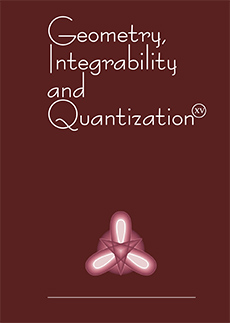Abstract
Membranous structures that are composed of particles with in-plane $C_{2}$ group symmetry are studied. Starting from a single-constituent energy it is derived that the relevant invariants for description of such systems are the mean curvature and the curvature deviator; the energy of the system can be expressed in a simple and transparent form by these two invariants while their average values span the phase diagram of shapes that can be attained by the membrane enclosed structures.
A variational problem for axisymmetric shapes is stated where the shapes with extreme average mean curvature and extreme average curvature deviator at relevant constraints are sought for. It is shown that, at fixed membrane area and at fixed enclosed volume, the solutions of the variational problem correspond to spherical, cylindrical and toroidal shapes. These solutions form lines in the phase diagram of possible shapes that separate classes of shapes with different symmetry properties. Physically, these lines represent limits of trajectories formed by processes that cause change of the average mean curvature and/or average curvature deviator, such as intercalation of particles into the membrane. Correspondence with some experiments involving toroidal structures of erythrocyte membrane, induced by exogenously added amphiphilic molecules, is considered.
Information
Digital Object Identifier: 10.7546/giq-3-2002-224-237


